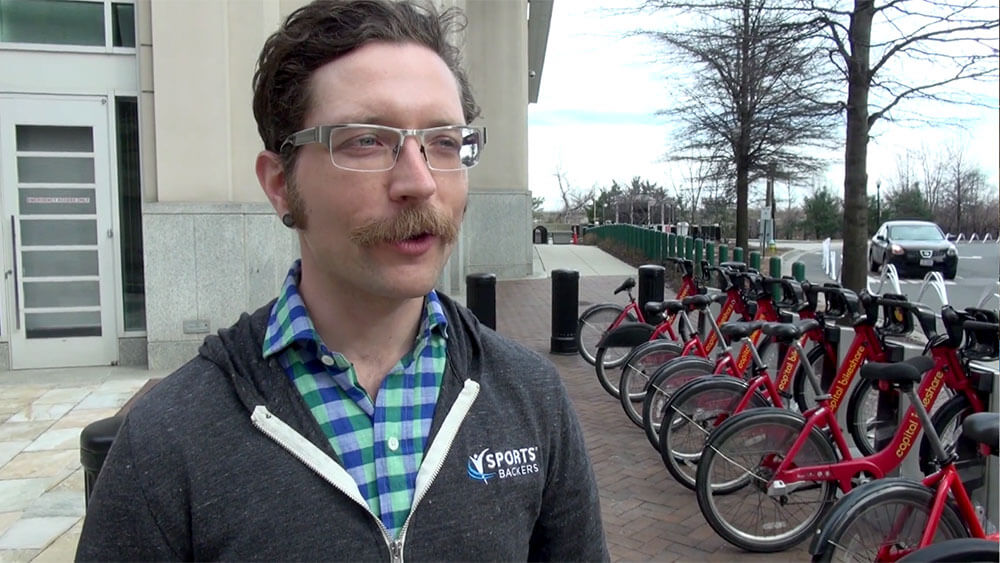
Brantley Tyndall of Richmond, Virginia, explains one of the most ridiculous reasons to oppose bike lanes in a video created for the National Bike Summit. Watch the full video below.
As prospective attendees consume endless hours of videos on their laptops, tablets, and smartphones, savvy event marketers know that creating engaging material can attract some of those eyeballs. However, the events industry lags behind the rest of the online landscape in leveraging video. According to an Eventbrite survey of 1,500 event professionals, 57 percent of events do not use video in their digital marketing efforts. It’s a missed opportunity, and I’m willing to bet that many of those respondents have one big concern: budget.
Video doesn’t have to be complicated or expensive, though. A five-minute clip produced by Streetfilms in coordination with the National Bike Summit proves that making an effective video relies on one ingredient: attendees’ voices. The video collects responses to one question that has created issues for many bike enthusiasts: What’s the most ridiculous comment you’ve heard in opposition to a bike lane?
Cyclists in urban areas want designated lanes to help prevent some of the dangers of sharing the road with cars. Adding those lanes seems like a common-sense approach to safety, but the video makes it clear that there are many people who have problems with giving the road to non-drivers. “It that bike lane gets installed, the terrorists will win” may win the prize for most ridiculous comment shared by an attendee in the video, but there is some strong competition for the runner-up spot — such as the potential for mass bird extinctions and claims that people of certain races do not ride bikes.
Marketing Takeaways from National Bike Summit
So what do bike lanes have to do with your own video efforts? Well, probably not much. However, there are valuable lessons from this video approach that can apply to any event’s digital engagement strategy.
First, it’s not about the actual summit. Instead, it puts the spotlight on the community that comes to the summit, and that’s more powerful than any item on the agenda. Sourabh Kothari, co-founder and CEO of IntentWave, offered some valuable advice on avoiding the trap of talking about an event when he spoke at Convening Leaders in 2017. “Stop trying to make a video about your event and how great it was,” Kothari said. “It’s over.”
Second, it’s simple. This does not feel like an overly produced, expensive video. The man-on-the-street approach requires one camera, some editing, and most importantly, a cast of unpaid characters who are comfortable sharing their perspectives.
Third, it’s funny. Bike safety isn’t a laughing matter, but the focus on the “ridiculous” portion gives attendees the creative license to have some fun with this video. It helps create an emotional connection with viewers — one that may just be powerful enough to do what every video with an advocacy focus should do: Get people to stop watching it and actually do something.
And lastly, it directly addresses a topic this audience is clearly passionate about. That seems the biggest opportunity for events of all kinds: What’s the thing — challenge, issue, insider fact of life — that your audience most cares about and how do you create a buzz around it?
The bike lane isn’t the only surprising place to find some inspiration for your online engagement efforts. See what Beyoncé and Jay-Z can teach you about digital strategy.
